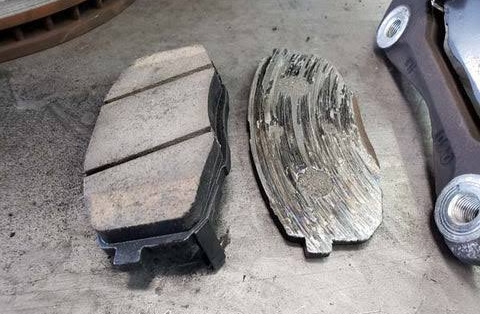Travel Tips
How to Maintain Your Car for a Long Road Trip

Planning a road trip can be an exciting adventure, but ensuring your car is ready for the journey is crucial to avoid breakdowns or mishaps along the way.
Proper car maintenance before a long trip is essential for safety, performance, and peace of mind. This detailed guide will walk you through how to prepare your car for a road trip, covering everything from tire care to fluid checks.
1. Inspect Your Tires
Tires are one of the most critical components for a road trip. Here’s what to check:
- Tire Pressure: use a tire pressure gauge to ensure the tires are inflated to the recommended levels specified in your car’s manual. Underinflated or overinflated tires can affect fuel efficiency and safety.
- Tire Tread: check the tread depth to ensure sufficient grip on the road. Place a penny into the tread grooves; if you can see the top of Lincoln’s head, it’s time to replace the tires.
- Look for Damage: Inspect for visible cracks, punctures, or bulges. Replace any damaged tires to prevent blowouts during your trip.
2. Check and Change Fluids
Fluids keep your car running smoothly. Ensure they’re at the correct levels and replace them if needed:
- Engine Oil: Check the oil level using the dipstick and top it up if necessary. If your oil is old or nearing its replacement interval, schedule an oil change before the trip.
- Coolant: Inspect the coolant reservoir to ensure the level is adequate. Coolant helps regulate the engine temperature, especially on long drives in varying weather conditions.
- Brake Fluid: Low brake fluid can affect your braking performance. Check the reservoir and add more if needed.
- Transmission Fluid: Proper transmission fluid levels ensure smooth gear shifts, which are essential for long drives.
- Windshield Washer Fluid: Fill up your washer fluid and ensure the wipers work efficiently to keep your windshield clear during the trip.
3. Test the Battery
Your car battery must be in good condition to avoid breakdowns. Here’s how to check it:
- Voltage Check: Use a multimeter to test the battery voltage; it should read around 12.6 volts when fully charged.
- Clean Terminals: Ensure the battery terminals are clean and free of corrosion.
- Replace if Needed: If the battery is over three years old or shows signs of weakness, consider replacing it before your trip.
4. Inspect the Brakes
Properly functioning brakes are vital for safety on a long road trip. Check for:
- Brake Pads: Inspect the thickness of your brake pads. If they’re worn, replace them.
- Brake Performance: Listen for unusual noises or vibrations when braking, which could indicate issues.
- Brake Fluid: Ensure the fluid is clean and at the correct level.
5. Check Lights and Signals
All lights and signals must work properly to ensure visibility and communication with other drivers:
- Test headlights, taillights, brake lights, and turn signals.
- Replace any burnt-out bulbs.
- Ensure the headlights are aimed correctly for optimal road illumination at night.
6. Test Your Air Conditioning and Heating System
Comfort is key on a long road trip. Make sure your HVAC system is functioning correctly:
- Cooling: Test the air conditioning for effective cooling, especially if you’re traveling in hot weather.
- Heating: Ensure the heater works if your journey involves colder climates.
7. Pack an Emergency Kit
Unexpected situations can arise during a road trip. Be prepared with an emergency kit that includes:
- A spare tire, jack, and lug wrench.
- Jumper cables.
- A first-aid kit.
- Flashlights and extra batteries.
- Basic tools like screwdrivers, pliers, and duct tape.
- Drinking water, snacks, and a phone charger.
8. Check the Suspension and Steering
Your car’s suspension and steering system should be in good condition to handle long hours on the road.
- Shock Absorbers: Look for signs of wear, such as leaking fluid or uneven tire wear.
- Steering Response: Test the steering for any looseness or unusual vibrations.
9. Clean and Organize Your Car
A clean car makes for a more pleasant road trip experience:
- Exterior: Wash and wax the car to protect the paint.
- Interior: Vacuum and organize the cabin to maximize comfort.
- Windows and Mirrors: Clean all glass surfaces for better visibility.
10. Plan Fuel Stops and Check Mileage
Before hitting the road, calculate your car’s fuel efficiency and plan stops at reliable fuel stations along the route.
Carry a spare fuel can if you’re traveling through remote areas with fewer gas stations.
11. Update Your Documents and Insurance
Ensure all necessary documents are up to date:
- Driver’s license.
- Car registration.
- Proof of insurance.
12. Test Drive Before Departure
Take your car for a short test drive to identify any issues that might have been overlooked. Pay attention to engine performance, braking, and overall handling.
Proper car maintenance before a long road trip ensures safety, comfort, and reliability throughout your journey.
By inspecting your tires, checking fluids, testing your battery, and addressing any potential issues, you reduce the risk of breakdowns and enhance your road trip experience.
Regular maintenance is an investment in your car’s longevity and your peace of mind.















